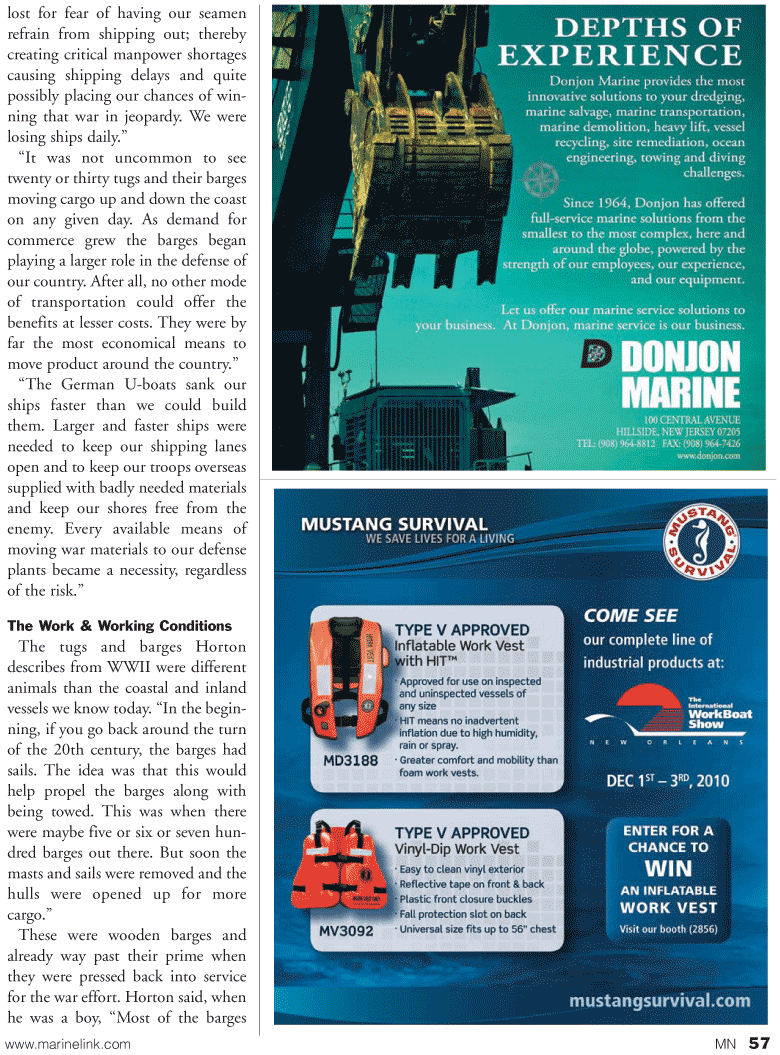
Page 57: of Marine News Magazine (November 2010)
Workboat Annual
Read this page in Pdf, Flash or Html5 edition of November 2010 Marine News Magazine
www.marinelink.com MN 57 lost for fear of having our seamen refrain from shipping out; thereby creating critical manpower shortages causing shipping delays and quite possibly placing our chances of win- ning that war in jeopardy. We were losing ships daily.” “It was not uncommon to see twenty or thirty tugs and their barges moving cargo up and down the coast on any given day. As demand for commerce grew the barges began playing a larger role in the defense of our country. After all, no other mode of transportation could offer the benefits at lesser costs. They were by far the most economical means to move product around the country.” “The German U-boats sank our ships faster than we could build them. Larger and faster ships were needed to keep our shipping lanes open and to keep our troops overseas supplied with badly needed materials and keep our shores free from the enemy. Every available means of moving war materials to our defense plants became a necessity, regardless of the risk.”
The Work & Working Conditions
The tugs and barges Horton describes from WWII were different animals than the coastal and inland vessels we know today. “In the begin- ning, if you go back around the turn of the 20th century, the barges had sails. The idea was that this would help propel the barges along with being towed. This was when there were maybe five or six or seven hun- dred barges out there. But soon the masts and sails were removed and the hulls were opened up for more cargo.”
These were wooden barges and already way past their prime when they were pressed back into service for the war effort. Horton said, when he was a boy, “Most of the barges

 56
56

 58
58
